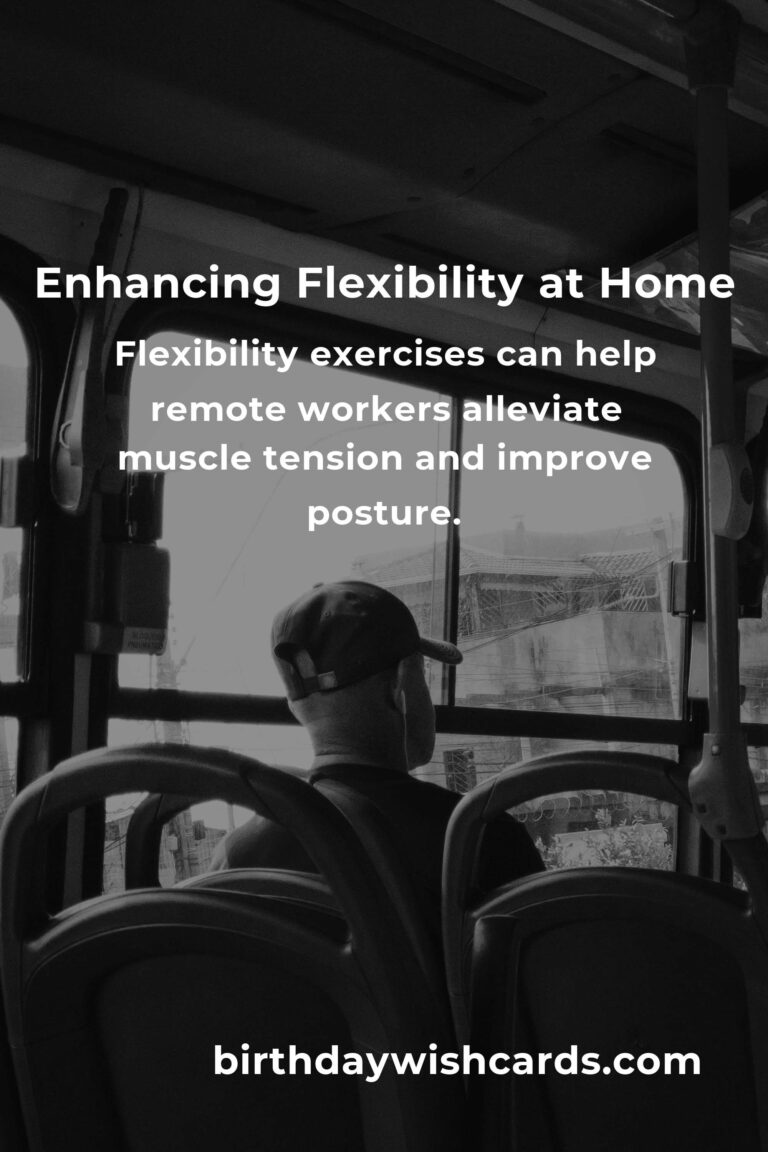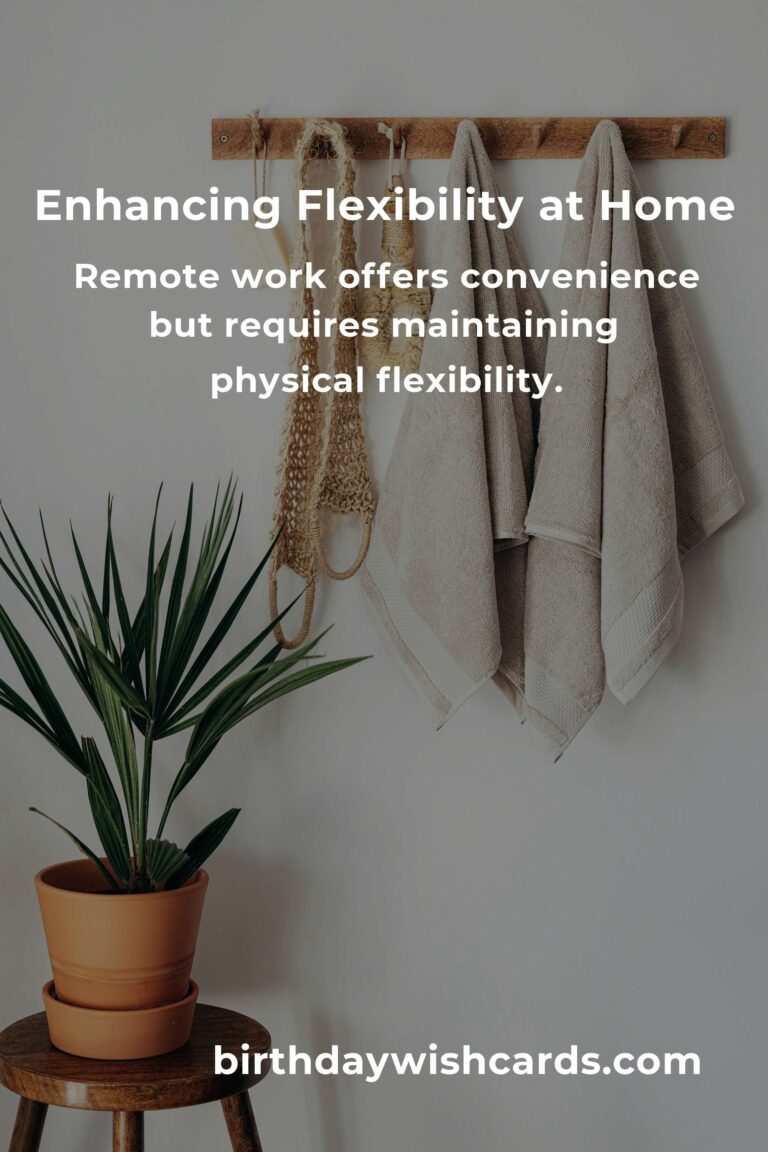
In the modern digital age, remote work has become a norm for many professionals. While this offers numerous advantages, such as eliminating commuting time and providing a more relaxed work environment, it also presents unique challenges. One of the key challenges is maintaining physical flexibility while spending long hours in front of a computer screen. Implementing a home flexibility routine can help remote workers improve their physical health, boost productivity, and enhance their overall work-life balance.
Understanding the Importance of Flexibility
Flexibility is a crucial component of physical fitness, which refers to the ability of your joints and muscles to move through their full range of motion. It is essential for maintaining overall body function, reducing the risk of injuries, and improving posture. For remote workers, who often spend prolonged periods sitting, flexibility exercises can help alleviate muscle tension, prevent stiffness, and enhance circulation.
Benefits of a Home Flexibility Routine
Creating a home flexibility routine offers several benefits, especially for those working remotely. Firstly, it helps reduce the risk of developing musculoskeletal disorders associated with sedentary behavior. Flexibility exercises also enhance blood flow, which can improve concentration and reduce fatigue. Moreover, these exercises can serve as a mental break, reducing stress and promoting a sense of well-being.
Designing Your Home Flexibility Routine
When designing a home flexibility routine, it’s essential to include a variety of exercises that target all major muscle groups. A well-rounded routine should incorporate stretching, yoga, and dynamic movements. Below is a simple routine that remote workers can incorporate into their daily schedule:
1. Morning Stretch
Begin your day with a gentle full-body stretch. This can include neck rolls, shoulder shrugs, arm circles, and hip openers. Spend about 10 minutes loosening up your muscles to prepare your body for the day ahead.
2. Mid-Morning Yoga
Take a break mid-morning for a short yoga session. Poses such as downward dog, cat-cow, and child’s pose can help relieve tension in the back and shoulders, which are common problem areas for remote workers.
3. Lunchtime Dynamic Movements
Incorporate dynamic movements during your lunch break to boost your energy levels. This can include leg swings, torso twists, and side lunges. These movements help increase your heart rate and improve flexibility.
4. Afternoon Desk Stretches
Perform some desk-friendly stretches in the afternoon. Wrist stretches, seated spinal twists, and ankle rotations can be done without leaving your chair, making them perfect for a quick flexibility boost during work hours.
5. Evening Relaxation Routine
End your day with a relaxation routine that focuses on deep stretching. Incorporate longer holds in poses like pigeon pose, forward bends, and happy baby to release tension accumulated throughout the day.
Tips for Maintaining Your Routine
Consistency is key to reaping the benefits of a flexibility routine. Set reminders to take breaks and move throughout the day. It can also be helpful to create a dedicated space in your home for stretching and relaxation, free from distractions.
Remember that flexibility improves over time, so be patient with your progress. Listen to your body and avoid pushing yourself too hard, especially in the beginning. Gradual progression will lead to better results and prevent injury.
Conclusion
Incorporating a home flexibility routine into your daily schedule can significantly improve your physical health, enhance your productivity, and balance your work-life dynamics. By taking these small yet impactful steps, remote workers can thrive both professionally and personally, ensuring their well-being in the long run.
Remote work offers convenience but requires maintaining physical flexibility.
Flexibility exercises can help remote workers alleviate muscle tension and improve posture.
A home flexibility routine reduces the risk of musculoskeletal disorders and enhances concentration.
Incorporate stretching, yoga, and dynamic movements into your routine for overall benefits.
Consistency and patience are vital for improving flexibility over time.
#RemoteWork #Flexibility #WorkLifeBalance #HomeExercise #HealthyLiving













